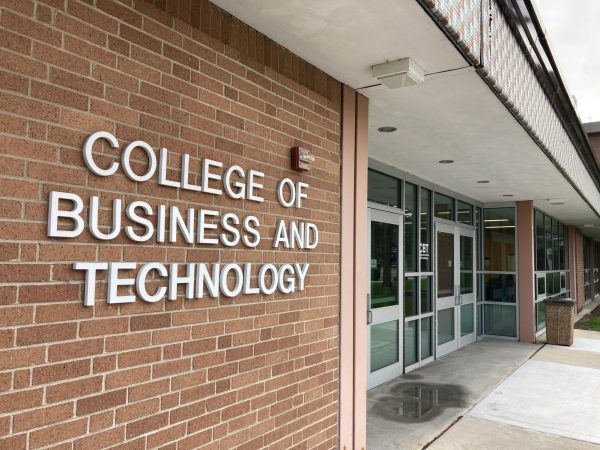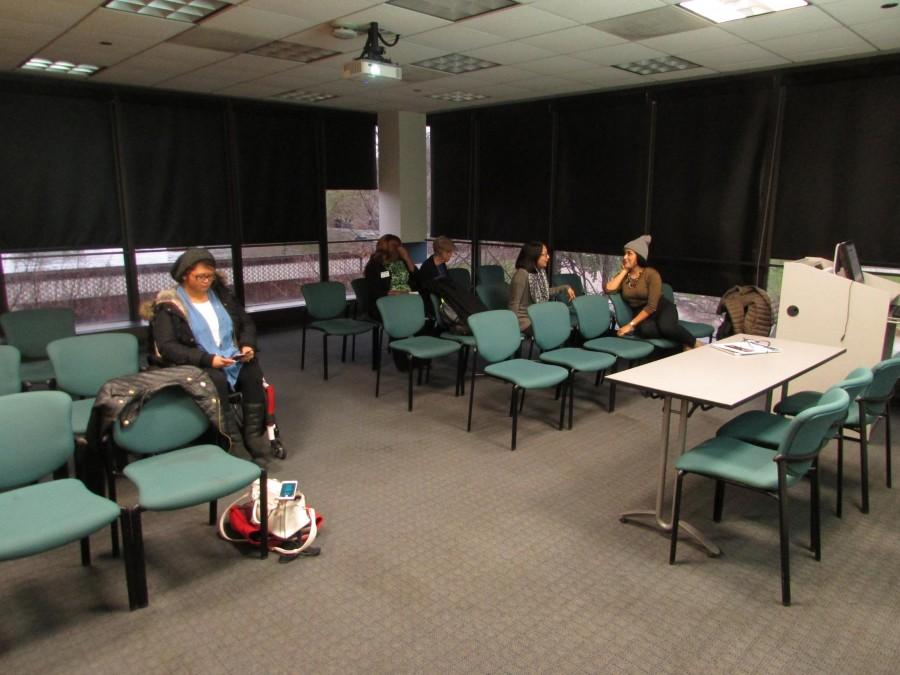Administration Works With Students Over Financial Aid Issues
Students discussed financial aid problems with the admissions office.
The Student Government Association (SGA) and Administration Office hosted a meeting to discuss financial aid and the issues some students are facing Nov. 17.
Associate Vice President of Enrollment Services Janice Harring-Hendon represented the Administration Office along with representatives from the financial aid office—Financial Aid Director Maureen Amos and Associate Director of Financial Aid Mildred Jackson—to answer any questions or address concerns regarding problems students have had with financial aid.
“Our offices support what we call the ‘life cycle’ of the student,” Harring-Hendon said. “I thought it would be good if we just started talking and maybe unloading (these issues)…not necessarily (students) just standing in line dealing with a complex problem.”
Harring-Hendon explained that their job is to try and make the student’s payment process easier so they have more time focusing on their academic goals.
SGA Vice Chair Anila Lunani brought up the issue of holds — specifically financial holds — and asked how students can register without having to pay their full balance for the previous semester.
Director of Student Enrollment Services, Tom Lambert addressed this problem and elaborated on the options students have. He explained that it is important for a student to go to the student payment services office to find out specifically if the hold on their account pertains to Accounts Receivables (AR) and what is causing the hold. Once the specifics are established the student should set up a payment plan and make a first installment to have the hold lifted.
NEIU senior Darline Abesamis asked if there was a way to make the financial aid process go more smoothly in terms of relating all the important information a student needs to know all at once. Abesamis said she had to go to the office three or four separate times when another red flag would appear on her NEIU port account just after she had submitted the papers she was told were required.
“In my situation—I’m not comparing myself to everyone else—it’s harder for me due to my disability,” said Abesamis referring to her need for a wheel chair.
Harring-Hendon said that the situation Abesamis referred to is when the government for what they call “verification” selects a student. These students are then required to submit additional documents that not all other students would be required to do. She said they do this “just to verify and make sure everything looks clean” as they compare the students’ tax forms to their FAFSA application.
Diane Knuth, a senior majoring in political science, said that she had gone into the Financial Aid office many times as well asking to speak with a financial aid adviser and was told she did not need to see one. Instead she was told that they could give her an immediate response from the front desk, assuring her they knew what information she required. Knuth said she received the wrong information, which caused her to return several times.
Knuth added that she has been selected for verification every year and at this point, being experienced in the situation and having put her three children through college as well, had the process down well and was always fully prepared with all her paperwork.
“I just get everything out,” she said.
Amos explained the reason a student could have one category formerly listed as a green check mark and then suddenly have it become a red flag is when a verification worksheet is turned in. If the verification worksheets’ information doesn’t completely match what was initially entered into a students’ FAFSA then the flags go up.
Amos said that another issue with verification that could make the process more difficult on students is that previously there was only one verification group and nearly all students had similar papers to turn in. Now there are six different groups and a student could be categorized in-between the groups depending on what information is required.
Jackson explained that if students turn in the verification worksheet without providing all the additional paperwork it may require, then that is when more flags will pop up and the process is halted. She said the process couldn’t continue until the student submits all of the forms that are initially seen from the red flags.
She also recommends students to try and obtain a receipt for all documents that are submitted, even though a student can email or fax their documents instead and strongly urges students to always double check what they need on their portals before they go to the Financial Aid office.
“If I don’t educate you on the process, then I failed you,” Jackson said. “I hold students responsible for their part. This is a joint effort, we can do our best if you do your best.”
Communication between students, administration and financial aid is the key and “education really is an important part of this,” Harring-Hendon said.
What I want you to leave with is that we are looking at the verification process and we’re looking at ways to make that process better,” Harring-Hendon said.
She also brought up the possibility of having further meetings and open Q&A’s about financial aid available for students in the future.
“I hope we can continue these discussions,” Harring-Hendon said.
Your donation will support the student journalists of Northeastern Illinois University's The Independent, either in writers' payment, additional supplies and other items of note. Your contribution will allow us to purchase additional equipment for writers/photographers/illustrators and cover our annual website hosting costs.
Laura Rojas









